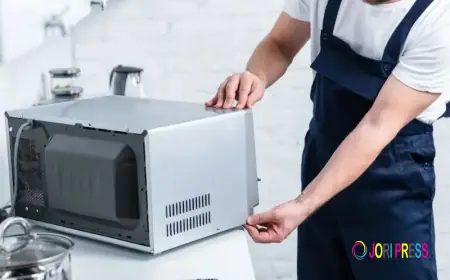Electric Vehicle Battery Adhesive Market insights into supply chain optimization and raw material sourcing challenges
The electric vehicle battery adhesive market is growing globally, driven by supply chain optimization efforts and challenges in sourcing raw materials essential for high-performance, durable, and eco-friendly adhesive solutions for EV batteries.
The electric vehicle battery adhesive market insights emphasize the importance of supply chain optimization and the challenges of raw material sourcing in maintaining consistent production of high-performance adhesives. Adhesives are critical in bonding battery cells, providing structural support, thermal management, and electrical insulation. The global EV market relies on reliable supply chains to ensure timely production of batteries that meet performance, safety, and durability standards. Manufacturers face challenges in sourcing specialized materials such as epoxies, polyurethanes, and silicones that meet the strict technical and environmental requirements of modern EV batteries. Efficient supply chain management ensures uninterrupted adhesive production and supports the global adoption of electric vehicles.
Market Drivers
Key drivers of market growth include rising demand for electric vehicles, advanced battery technologies, and the need for high-quality adhesive solutions. Adhesives contribute to battery safety, structural integrity, and thermal management, which are critical for efficient and reliable EV operation. Increasing adoption of lithium-ion, solid-state, and hybrid batteries intensifies the demand for high-performance adhesives capable of withstanding thermal, mechanical, and electrical stresses. Government incentives, environmental regulations, and the global push for sustainable transportation drive manufacturers to invest in research, supply chain resilience, and advanced adhesive production capabilities, ensuring consistent quality and reliability.
Technological Innovations
Technological advancements in battery adhesives focus on developing multifunctional, high-performance, and environmentally compliant materials. Epoxy, polyurethane, and silicone adhesives provide bonding, thermal conductivity, and electrical insulation. Conductive adhesives improve energy transfer between cells, while insulating adhesives prevent short circuits and enhance safety. Low-VOC and recyclable formulations reduce environmental impact without compromising durability. Automation in adhesive application improves precision, reduces waste, and increases production efficiency. Innovations in vibration-resistant, thermally conductive, and mechanically robust adhesives help manufacturers address supply chain challenges by reducing defects and ensuring reliable performance in EV battery systems.
Regional Insights
Regional demand for adhesives is influenced by EV production capacity, technological capability, and regulatory frameworks. Asia-Pacific leads in EV manufacturing, particularly China, Japan, and South Korea, driving global adhesive demand. North America exhibits steady growth due to supportive policies, incentives, and expanding EV adoption. Europe emphasizes safety, sustainability, and regulatory compliance, encouraging adoption of low-emission, high-performance adhesives. Emerging markets in Southeast Asia and India are gradually integrating advanced adhesive solutions to support local EV battery production. Companies investing in regional supply chain optimization can ensure timely access to raw materials and high-quality adhesive production to meet global demand.
Market Challenges
Challenges in the market include raw material shortages, supply chain disruptions, and high production costs. Adhesives must maintain structural integrity, thermal stability, and electrical insulation while meeting environmental regulations. Developing adhesives for lithium-ion, solid-state, and hybrid batteries requires specialized materials and advanced production techniques. Global supply chain disruptions can delay production and impact the timely delivery of high-performance adhesives. Companies must balance performance, sustainability, regulatory compliance, and cost while addressing raw material availability to maintain competitiveness and support uninterrupted production of EV batteries worldwide.
Competitive Landscape
The global adhesive market is highly competitive, with players emphasizing innovation, strategic collaborations, and supply chain resilience. Partnerships between adhesive manufacturers and automakers enable customized solutions for diverse battery applications. Mergers and acquisitions enhance technological expertise, production capacity, and regional market reach. Continuous innovation in multifunctional, durable, and environmentally compliant adhesives is critical to maintaining leadership. Companies providing high-performance adhesives with reliable supply chain management gain a competitive advantage. Strategic focus on raw material sourcing, production efficiency, and technological innovation allows manufacturers to meet global demand and strengthen their position in the growing EV battery adhesive market.
Applications Across EV Segments
Adhesives are applied across passenger vehicles, commercial EVs, buses, and trucks. Passenger vehicles benefit from lightweight, high-performance adhesives that enhance battery safety, thermal management, and efficiency. Commercial vehicles and buses require adhesives that withstand vibrations, prolonged operational hours, and extreme temperatures while maintaining consistent quality. Hybrid and plug-in hybrid vehicles rely on adhesives that provide structural integrity, thermal management, and electrical insulation. Optimized supply chains and reliable raw material sourcing ensure adhesive consistency, supporting battery performance, safety, and durability across diverse EV segments worldwide.
Future Outlook
The electric vehicle battery adhesive market is expected to grow steadily, driven by supply chain optimization and effective raw material sourcing. Advanced adhesives integrating structural bonding, thermal management, and electrical insulation will see broader adoption in next-generation battery systems. Sustainable, low-VOC, and recyclable adhesives will gain prominence to meet environmental and regulatory requirements. Investments in R&D, production efficiency, and global supply chain management will ensure availability of high-performance adhesives for EV battery production. Overall, the market presents significant opportunities for companies to develop innovative adhesive solutions that enhance battery safety, durability, and performance while maintaining supply chain reliability.
What's Your Reaction?
 Like
0
Like
0
 Dislike
0
Dislike
0
 Love
0
Love
0
 Funny
0
Funny
0
 Angry
0
Angry
0
 Sad
0
Sad
0
 Wow
0
Wow
0


















































